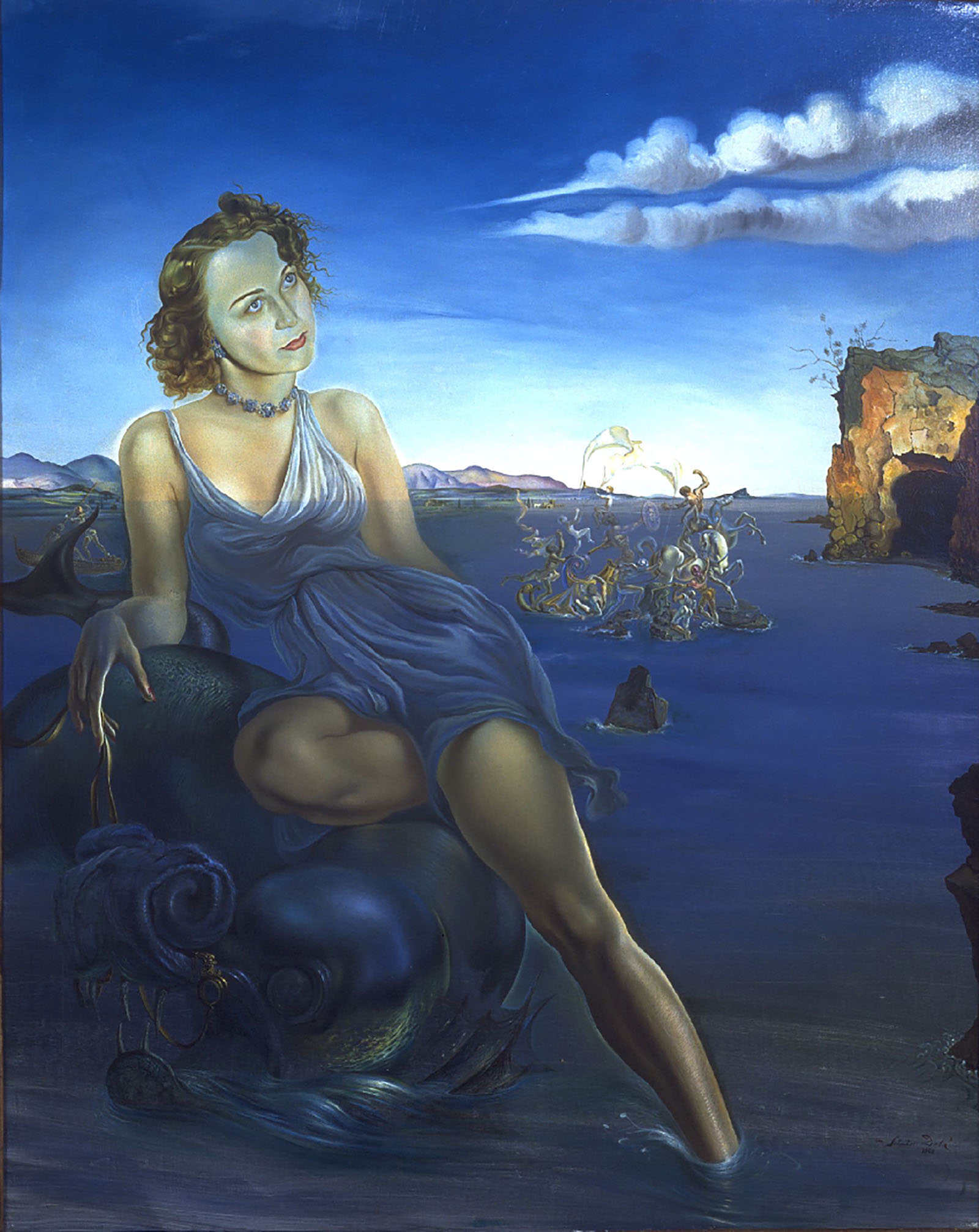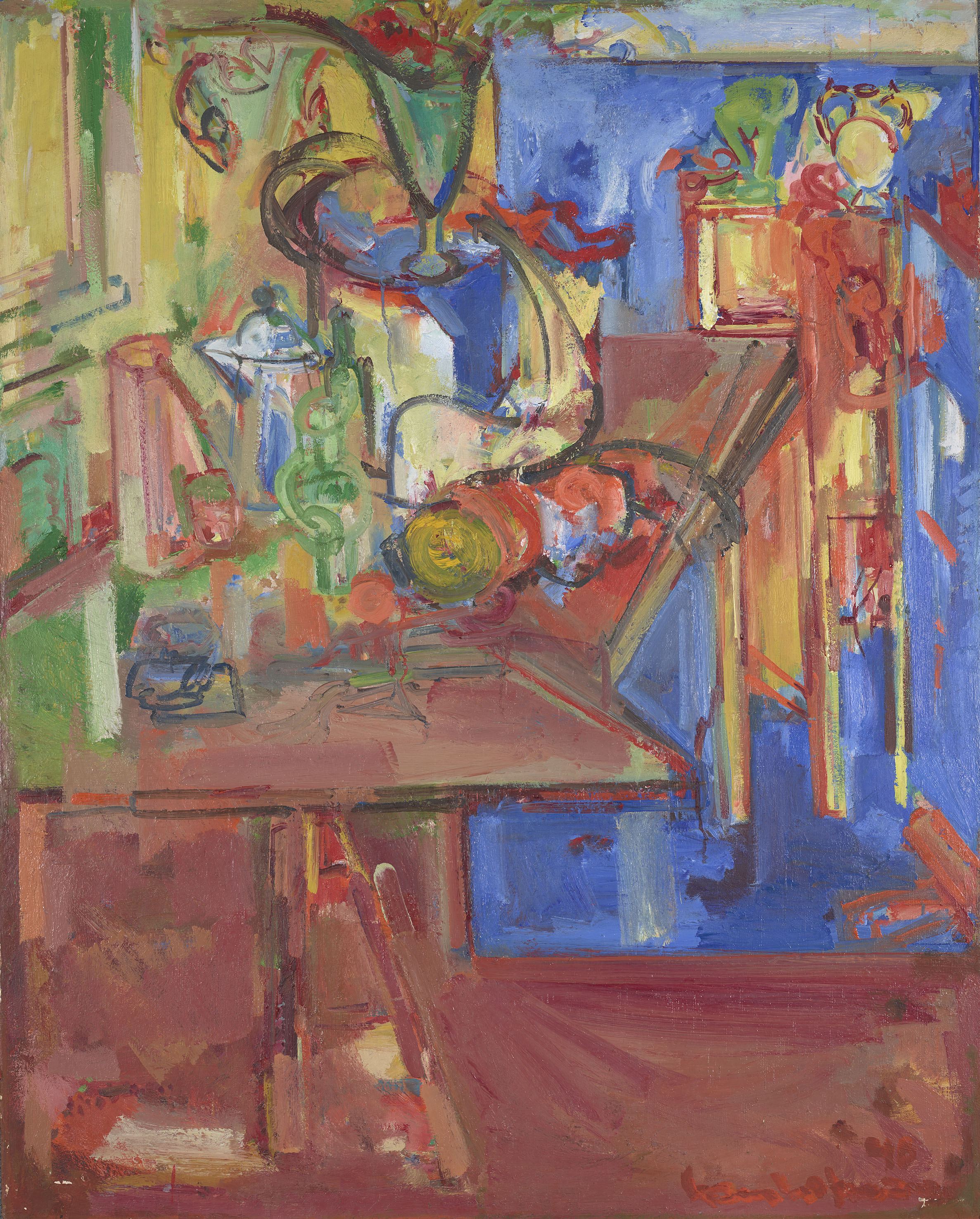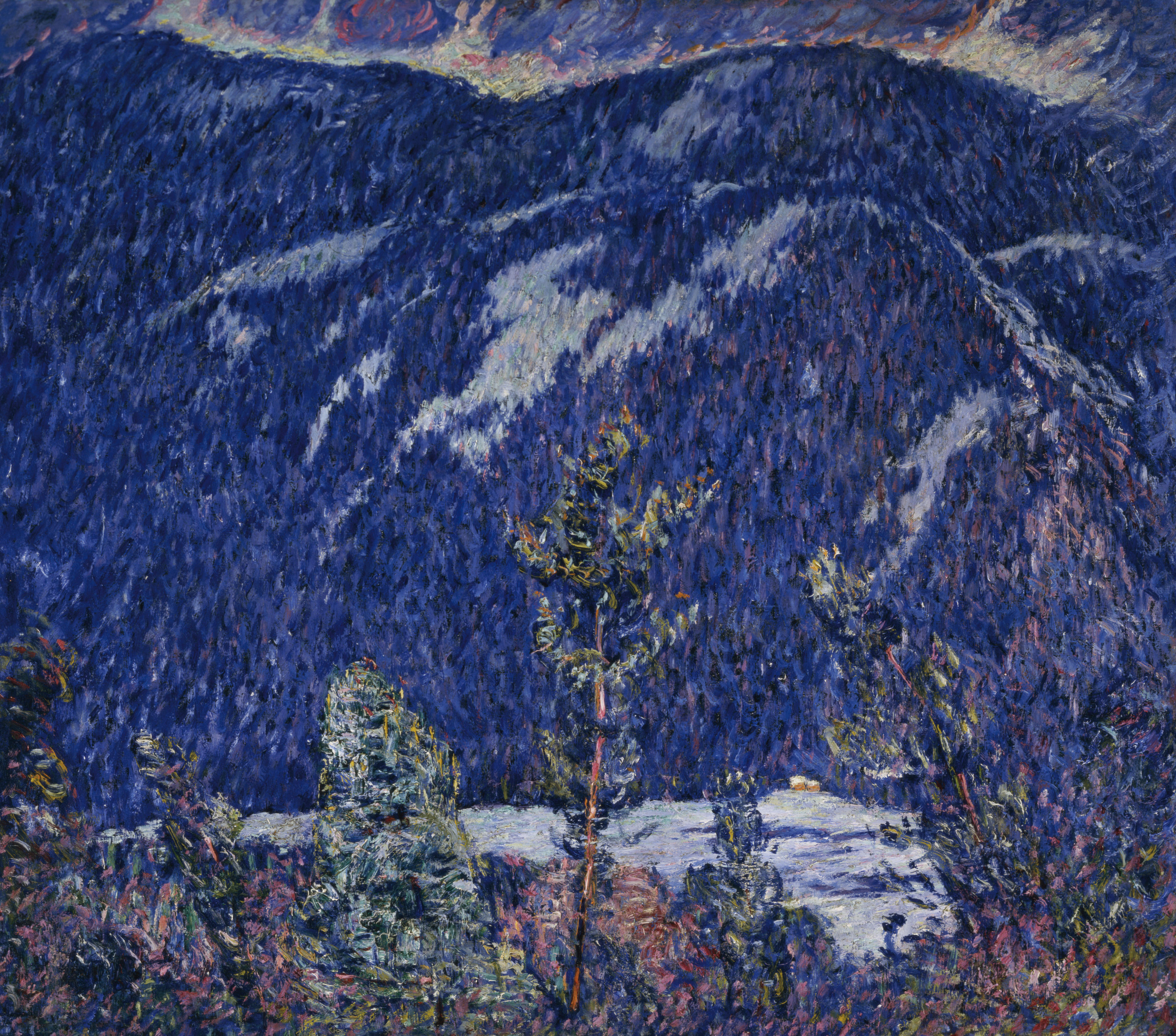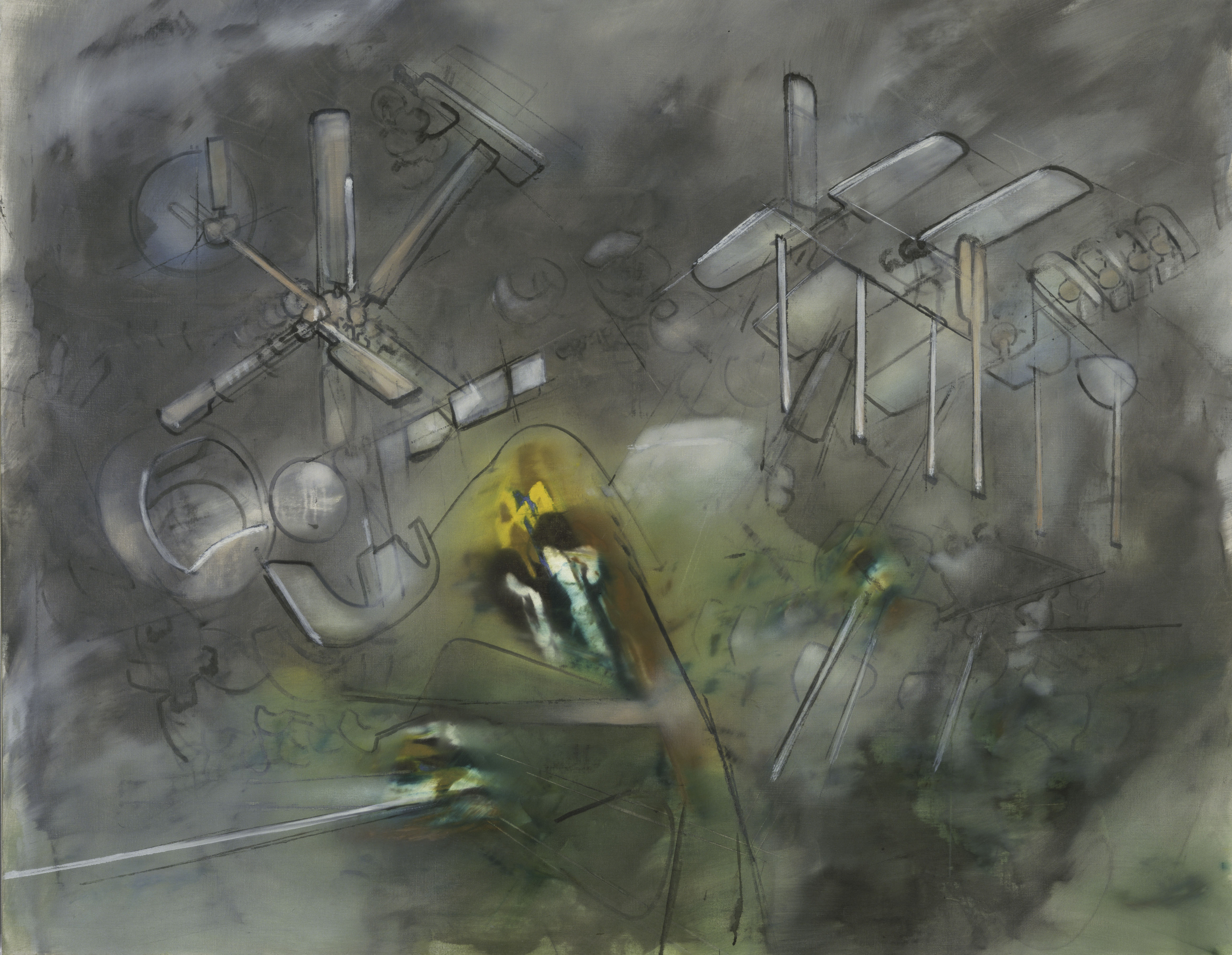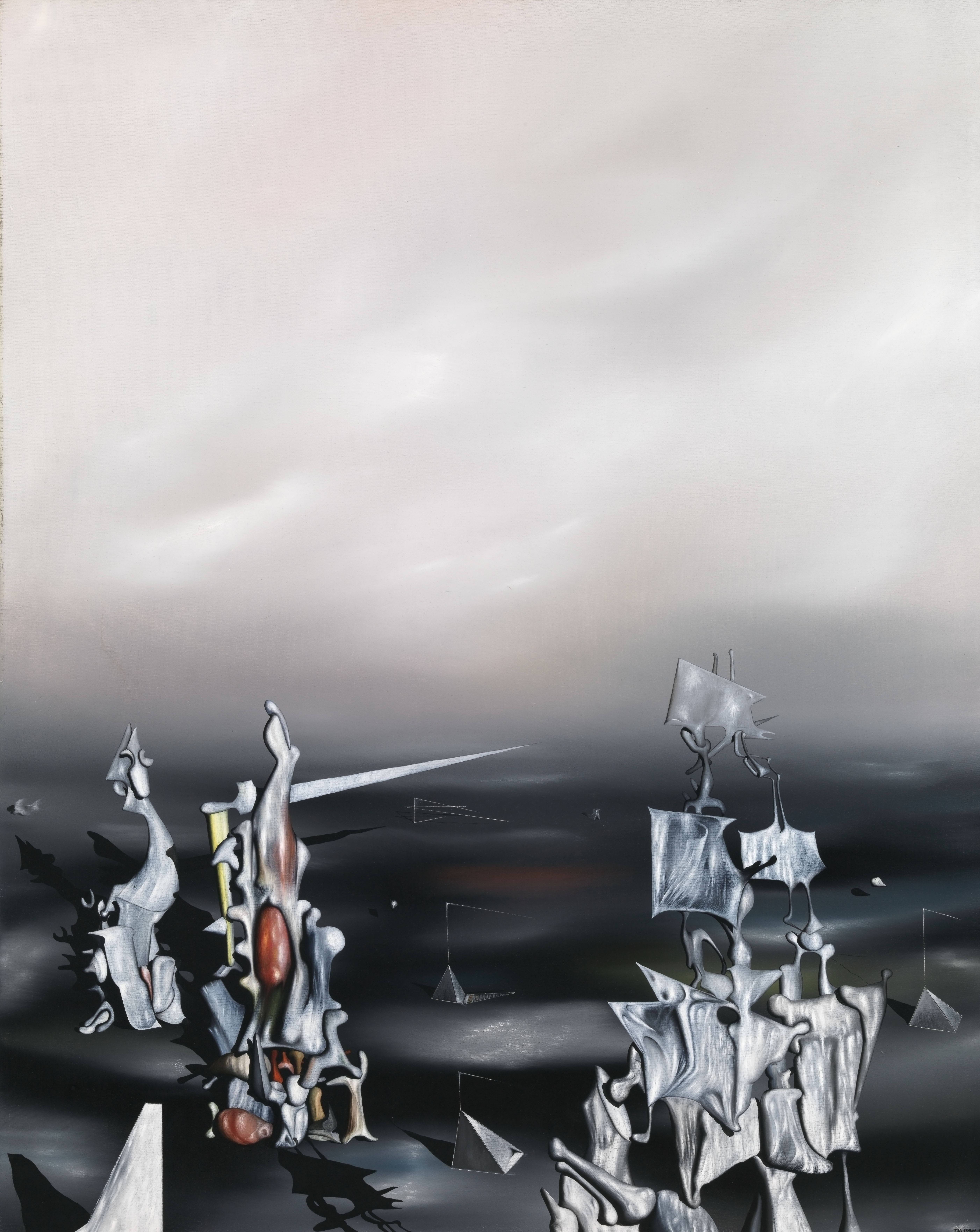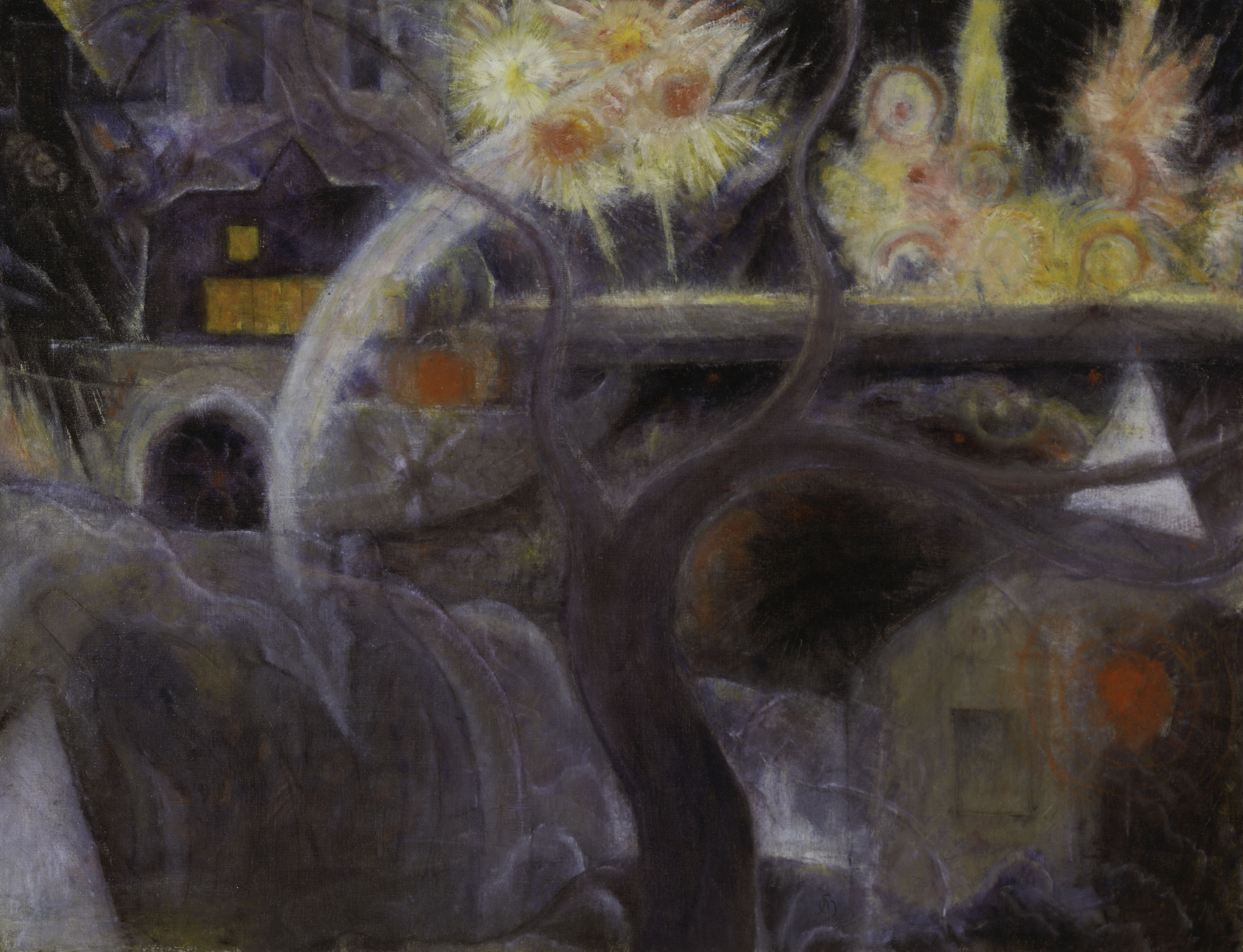Enid Haldorn
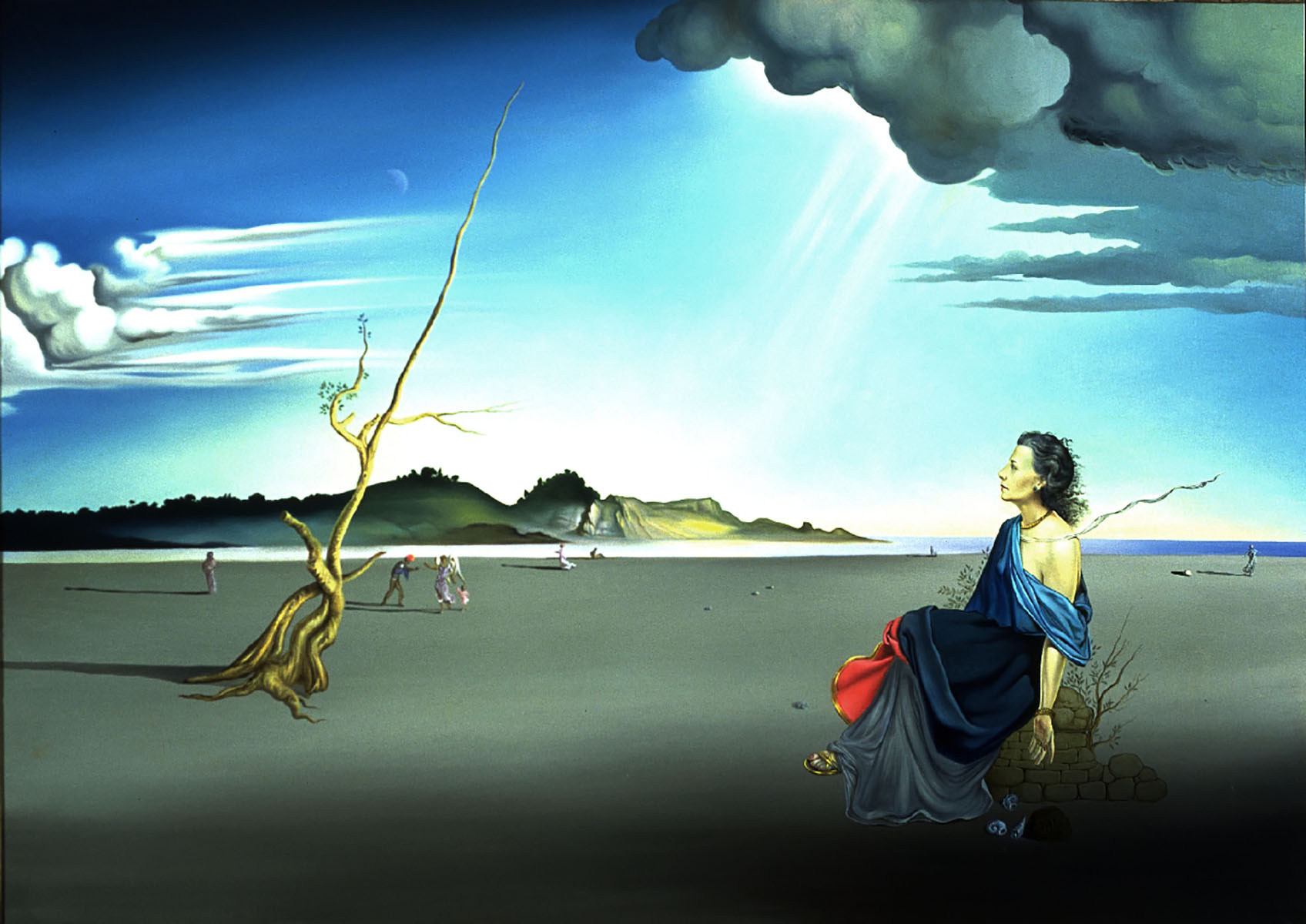
What does this painting represent to you?
This painting depicts Enid Haldron sitting on a low pile of adobe bricks on a vast sandy beach. Nine other characters wander the shoreline in the distance. By choosing this setting, Dalí hints at the location of Enid and her husband’s home: a seaside mansion in Monterey with its own private beach. The dancing woman on the right also suggests Enid’s past, when she would perform for charity. One of Enid’s good friends was Kathleen de Young, the daughter of the de Young museum’s founder.
